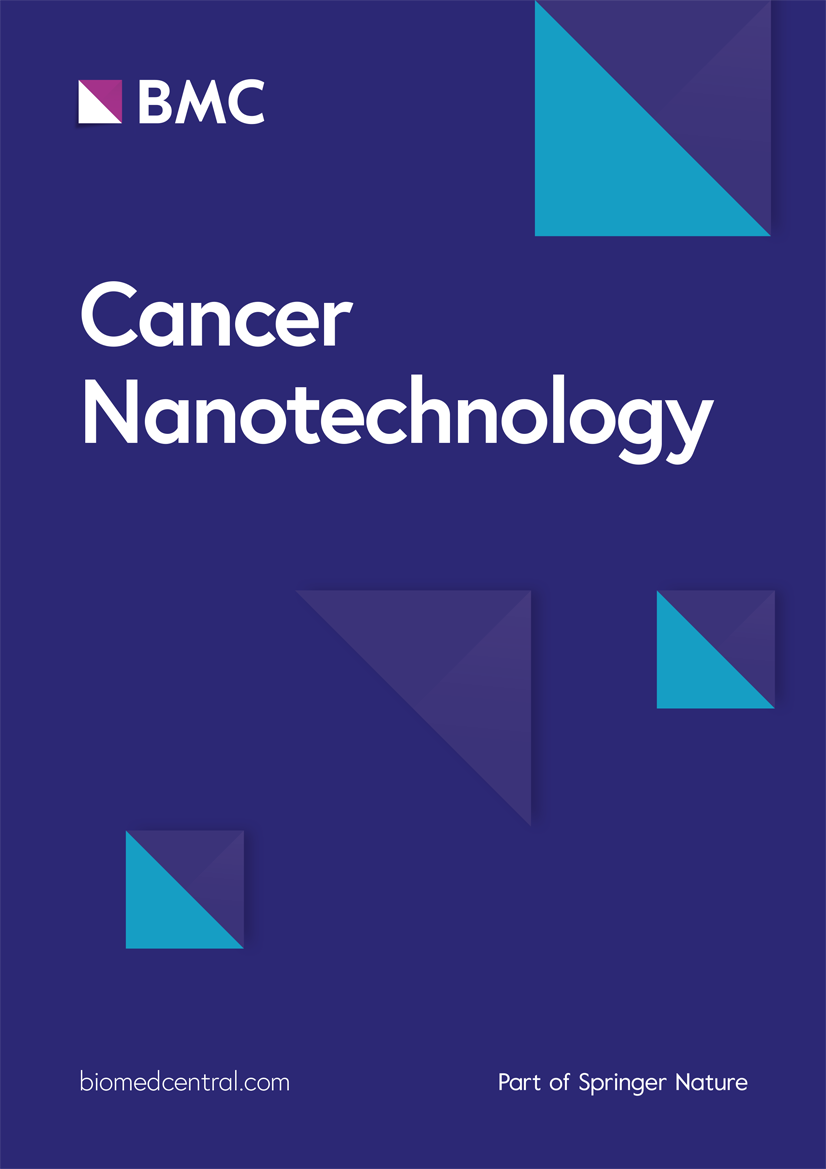Enhanced chemotherapy response in hepatocellular carcinoma: synergistic effects of miR-122 and doxorubicin co-delivery system inducing apoptosis and DNA damage
IF 4.8
2区 工程技术
Q2 NANOSCIENCE & NANOTECHNOLOGY
引用次数: 0
Abstract
Cancer cells can resist chemotherapy through various mechanisms, diminishing treatment outcomes. Research had indicated that combining miR-122 with doxorubicin (DOX) can improve hepatocellular carcinoma (HCC) therapy. To explore this, we created a one-pot co-delivery system, Fe-miR-122/DOX, by coordinating miR-122, DOX, and FeII ions into nanoparticles. These nanoparticles display uniform particle sizes, well-defined morphology, and exceptional colloidal stability in 10% FBS and 20% FBS solution over 24 h. When the ratio of DOX to miR-122 was set at 20:1, the loading efficiency of both drugs reached 54.7% and 55.5%, respectively. Cell experiments confirmed that Fe-miR-122/DOX efficiently delivers both miR-122 and DOX, enabling cytoplasmic delivery through lysosomal escape, facilitated by the positive charge of the nanoparticles. Functionally, miR-122 increases intracellular accumulation of DOX by downregulating P-glycoprotein (P-gp) expression, and it promotes apoptosis by downregulating B-cell lymphoma 2 (Bcl-2), which leads to the upregulation of Caspase-3. Additionally, Fe-miR-122/DOX disrupts cIAPs-mediated anti-apoptotic signals, downregulates PARP-1 expression, hinders DNA repair, promotes DNA fragmentation, enhances caspase-3 expression, and triggers programmed cell death, synergistically enhancing its antitumor efficacy. This synergistic mechanism disrupts DNA repair, amplifying DNA damage and apoptosis. Our cytotoxicity and apoptosis assays (with a HepG2 cell apoptosis rate of 85.98%) demonstrated the potent antitumor capability of Fe-miR-122/DOX. This innovative system has demonstrated good biocompatibility and has the potential to transform HCC therapy. Future research could focus on optimizing the co-delivery system and assessing its efficacy in clinical trials.增强肝细胞癌的化疗反应:miR-122 和多柔比星联合给药系统诱导细胞凋亡和 DNA 损伤的协同效应
癌细胞会通过各种机制抵抗化疗,从而降低治疗效果。研究表明,将 miR-122 与多柔比星(DOX)结合使用可改善肝细胞癌(HCC)的治疗。为了探索这一点,我们将 miR-122、DOX 和 FeII 离子配伍到纳米颗粒中,创建了一种一锅共给药系统--Fe-miR-122/DOX。当 DOX 与 miR-122 的比例设定为 20:1 时,两种药物的负载效率分别达到 54.7% 和 55.5%。细胞实验证实,Fe-miR-122/DOX 能有效地递送 miR-122 和 DOX,通过溶酶体逸出实现胞质递送,而纳米颗粒的正电荷则有助于溶酶体逸出。在功能上,miR-122 通过下调 P-糖蛋白(P-gp)的表达来增加 DOX 的细胞内蓄积,并通过下调 B 细胞淋巴瘤 2(Bcl-2)来促进细胞凋亡,从而导致 Caspase-3 的上调。此外,Fe-miR-122/DOX 还能破坏 cIAPs 介导的抗凋亡信号,下调 PARP-1 的表达,阻碍 DNA 修复,促进 DNA 断裂,增强 Caspase-3 的表达,引发细胞程序性死亡,从而协同增强其抗肿瘤疗效。这种协同机制破坏了 DNA 修复,扩大了 DNA 损伤和细胞凋亡。我们的细胞毒性和细胞凋亡试验(HepG2 细胞凋亡率为 85.98%)表明,Fe-miR-122/DOX 具有强大的抗肿瘤能力。这一创新系统具有良好的生物相容性,有望改变 HCC 治疗方法。未来的研究重点是优化联合给药系统,并在临床试验中评估其疗效。
本文章由计算机程序翻译,如有差异,请以英文原文为准。
求助全文
约1分钟内获得全文
求助全文
来源期刊

Cancer Nanotechnology
Pharmacology, Toxicology and Pharmaceutics-Pharmaceutical Science
CiteScore
5.20
自引率
1.80%
发文量
37
审稿时长
15 weeks
期刊介绍:
Aim:
Recognizing cancer as a group of diseases caused by nanostructural problems (i.e. with DNA) and also that there are unique benefits to approaches inherently involving nanoscale structures and processes to treat the disease, the journal Cancer Nanotechnology aims to disseminate cutting edge research; to promote emerging trends in the use of nanostructures and the induction of nanoscale processes for the prevention, diagnosis, treatment of cancer; and to cover related ancillary areas.
Scope:
Articles describing original research in the use of nanostructures and the induction of nanoscale processes for the prevention, diagnosis and treatment of cancer (open submission process). Review, editorial and tutorial articles picking up on subthemes of emerging importance where nanostructures and the induction of nanoscale processes are used for the prevention, diagnosis and treatment of cancer.
文献相关原料
公司名称
产品信息
索莱宝
Hoechst 33342
阿拉丁
Ferric chloride tetrahydrate
阿拉丁
Doxorubicin hydrochloride
 求助内容:
求助内容: 应助结果提醒方式:
应助结果提醒方式:


